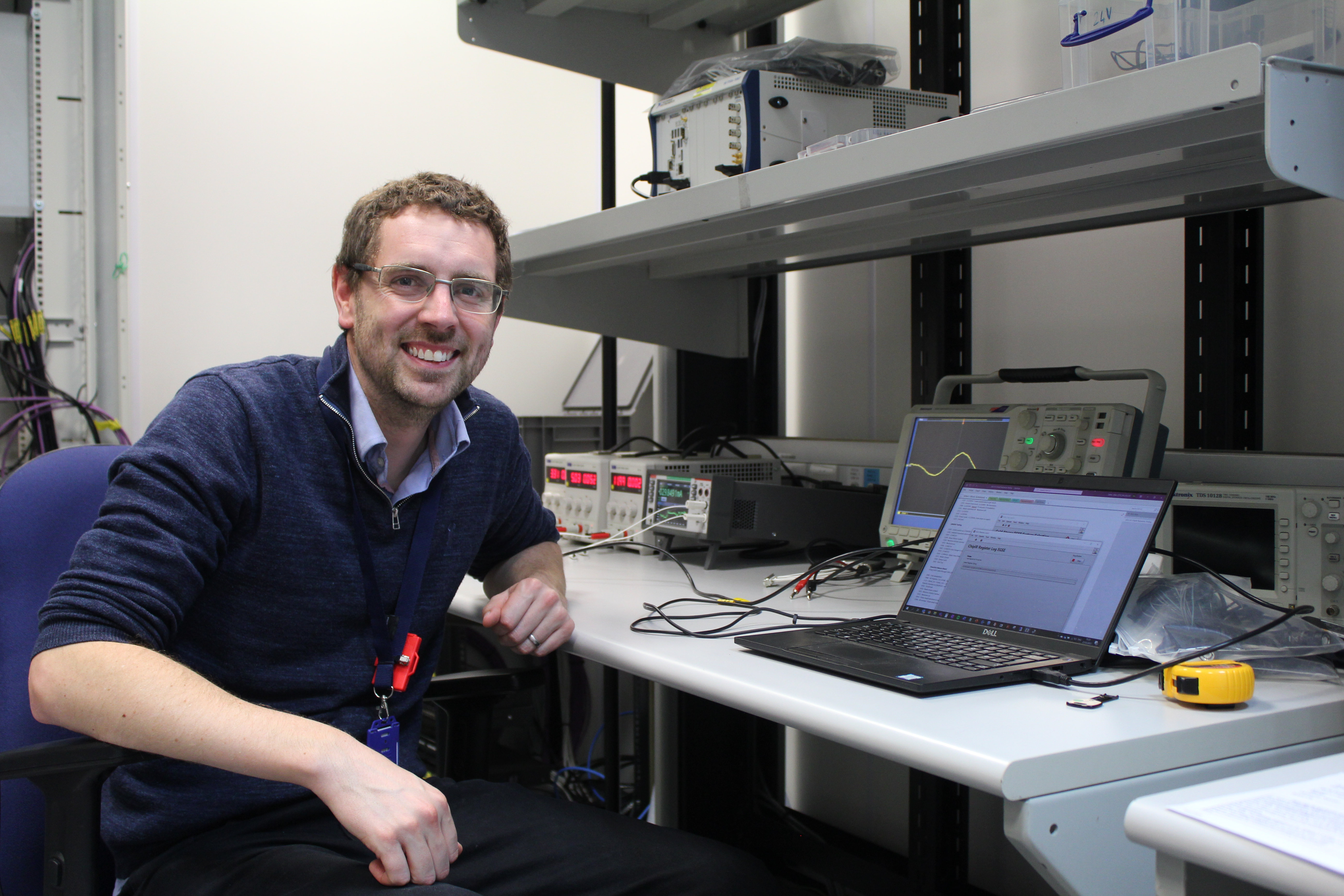The disruptive space technology centre at RAL Space specialises in finding alternative routes to satellite testing that are quicker and cheaper than traditional methods. As part of this, they carry out demonstrator missions, where they only test the newer and riskier pieces of equipment, relying on other components that have either been used in space before or that have been designed to be robust to radiation.
One test that is difficult to carry out is radiation testing. For longer missions, where ionising radiation is the main concern, the usual technique is to use protons, heavy ions and gamma-ray testing. For shorter missions in low Earth orbit single event upsets (SEUs) are the most likely source of error. These SEUs are often dealt with by introducing redundancy into the system and including duplicates or additional hardware. This proves costly, and so understanding the likelihood of SEUs and preventing them causing damage would be of huge benefit.
The ChipIr instrument at ISIS is designed to test for these incidents as part of its electronics radiation testing. Last year, ChipIr beamline scientist Carlo Cazzaniga was paired up with Rebecca Harwin from RAL Space as part of a mentoring scheme run by UK Research and Innovation (UKRI). “As well as helping me through my first year at STFC, Carlo also mentioned the work he did at ChipIr," says Rebecca. “If I hadn't been in contact with him, I probably wouldn't have known it was there, and wouldn't have thought to use it in our work."
After further discussions, Rebecca put in a proposal for Rapid Access and was able to come to ISIS in March 2023 to test optical components for use in satellites. Instead of developing and testing new technologies, she is looking at whether it's possible to use commercial off the shelf equipment to reduce cost and production time for future missions.
One example of the type of mission that will benefit from the work of the disruptive space technology centre is a collaboration with Speqtral that aims to demonstrate quantum key distribution from space. For future missions such as this one, the photon detectors will need to be very sensitive, but this may also cause them to be more prone to radiation damage and hence there is an even greater need for the ChipIr testing.
 As well as Rebecca's work, her colleague from RAL Space Mike Salter (pictured, right) has also been carrying out experiments on ChipIr, focussing on the electronic components for the Speqtre mission. Instead of looking at off-the-shelf devices, Mike is testing custom electronics designed by the team at RAL Space, but based on lower-cost existing components that should (!) be radiation-proof.
As well as Rebecca's work, her colleague from RAL Space Mike Salter (pictured, right) has also been carrying out experiments on ChipIr, focussing on the electronic components for the Speqtre mission. Instead of looking at off-the-shelf devices, Mike is testing custom electronics designed by the team at RAL Space, but based on lower-cost existing components that should (!) be radiation-proof.
Having previously considered using ChipIr, but unsure about the correlation to the radiation present space, recent research confirmed to Mike that the testing is representative and therefore relevant to his work. And the current test seems to be working: “after just 20 minutes of testing, the electronics are holding up well," he explains. “Although this might not seem long, it's the equivalent of two years in low Earth orbit!"
After these initial experiments, it's likely both Rebecca and Mike will return to ChipIr with more samples. “Now we have been here and seen how the testing works, we'll definitely aim to design thorough, more complete tests for future experiments," adds Mike.
